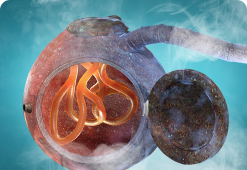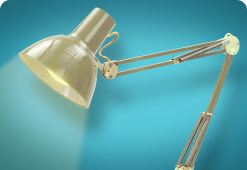The symptoms of glomerular disease vary from person to person,2 with some people having no symptoms at all in the early stages.1,2
When symptoms do occur, they might include:
Blood in your urine (haematuria)
One of the most common symptoms of glomerular disease is urine that’s either pink, tea- or cola-coloured.1,2 However, if there are only traces of blood, they might not be visible.1,2 This is called microhaematuria and can be detected through urine testing.2
Foamy urine (proteinuria)
Damaged glomeruli can also cause foamy urine when proteins don’t get filtered properly and leak into your urine.1,2
Swelling (oedema)
The leakage of blood and protein in the urine may in turn make the body retain more water, causing swelling, usually of the ankles and feet.1,2 This can be painful if the swelling is severe.3
Pain
There may be pain in the sides of your back, where the kidneys are located.2 This area is called the flank.4
High blood pressure (hypertension)
Your blood pressure might increase if your glomeruli can’t do their job properly.1,2
Other symptoms
Certain types of glomerular disease can also lead to high cholesterol, low levels of protein in the blood and sometimes, a serious condition known as nephrotic syndrome.2
What is nephrotic syndrome?
Nephrotic syndrome is a group of symptoms associated with kidney damage such as large amounts of protein in your urine, low levels of protein in your blood, and oedema.1,2
How symptoms progress
In the early stages, symptoms may not be obvious.1 They tend to get worse over time.1 In some cases, glomerular disease can lead to a decline in kidney function and possibly kidney failure.5
Bear in mind that having any of these symptoms doesn’t necessarily mean that you have a glomerular disease. You should always check with your doctor if you suspect glomerular disease. You can find advice to help you get the most out of your interactions with your doctor here.

About glomerular disease
Learn about glomerular disease.

Glossary
Find a list of terms along with a simple explanation here.

Asking your doctor
Download a discussion guide to help you speak to your healthcare team.

Diagnosis
Find out how glomerular diseases are diagnosed.